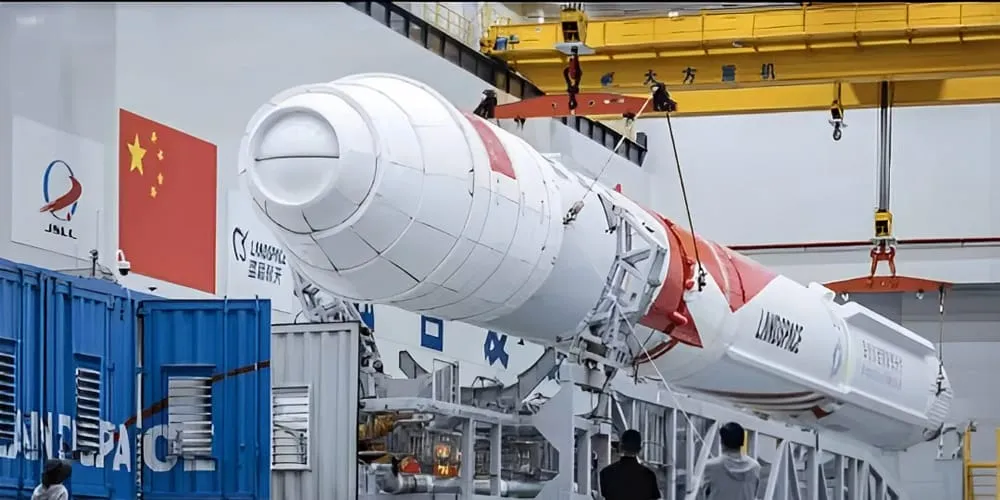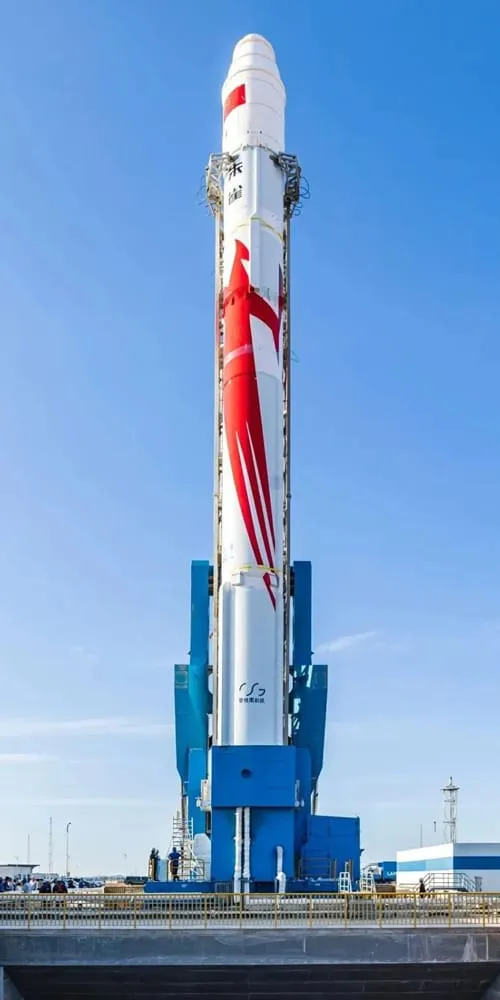Last Updated on: 22nd November 2023, 06:14 am
In the vast expanse of space, a groundbreaking achievement has taken place. On the morning of July 12th, the Zhuque-2 Y2 carrier rocket soared into the skies from the Jiuquan Satellite Launch Center in China, marking a monumental milestone in space exploration.
Breaking Barriers: Zhuque-2 Enters Orbit with Methane-Oxygen Propulsion
The Zhuque-2 Y2 carrier rocket, fueled by a combination of liquid oxygen and methane, has become the world’s first successfully orbited rocket of its kind. This breakthrough signifies China’s advancement in utilizing low-cost liquid propellants, particularly in the form of liquid oxygen and methane, marking a paradigm shift in rocket propulsion technology.
Filling Gaps, Lowering Costs: The Zhuque-2 Revolution
The Zhuque-2 launch not only represents the successful deployment of a new rocket but also fills a significant void in China’s liquid rocket spectrum. With a diameter of 3.35 meters and a height of 49.5 meters, the two-stage Zhuque-2 boasts a takeoff weight of approximately 219 tons and a liftoff thrust of about 268 tons. Its first stage incorporates four Tianque 80-ton liquid oxygen methane engines in parallel, while the second stage features a combination of one Tianque 80-ton liquid oxygen methane engine and one Tianque 10-ton movable liquid oxygen methane engine.
Revolutionizing Commercial Space Launches
The advent of Zhuque-2 holds the promise of reducing commercial rocket launch costs substantially. By harnessing the power of liquid oxygen and methane, this rocket has the potential to revolutionize the commercial space launch market, making space missions more accessible and economically viable.
The Methane-Oxygen Propulsion: A Game-Changer in Space Exploration
Methane-oxygen propulsion, a combination of liquid oxygen and methane, represents a crucial innovation in rocket fuel technology. Methane, a primary component of natural gas, has gained prominence due to its high combustion efficiency, environmental friendliness, low cost, and ease of production. The use of methane in rocket engines has opened new avenues for researchers, offering a balance between performance and environmental sustainability.
Overcoming Challenges: From Setbacks to Success
The journey to the successful launch of Zhuque-2 was not without its challenges. Earlier attempts faced setbacks, mirroring the unpredictable nature of space exploration. Despite these obstacles, the team at Blue Arrow Aerospace persevered, meticulously analyzing failures, implementing improvements, and rigorously testing components to ensure a flawless mission.
The Role of Innovation: Intelligent Thrust Vector Control Systems
A pivotal element in Zhuque-2’s success lies in its intelligent thrust vector control system. Developed by a dedicated team from the China Aerospace Science and Technology Corporation, this high-power electric servo system underwent five years of intensive research and development. The system’s precision, executing commands with an error margin of only 0.05%, exemplifies the innovative spirit driving China’s space endeavors.
Looking Ahead: Paving the Way for Future Space Exploration
The successful launch of Zhuque-2 marks the beginning of a new era in space travel. As the world witnesses a surge in demand for large-scale space operations and routine space transportation, the development of high-performance, reusable methane-oxygen engines emerges as a pivotal focus. China’s strides in this direction, coupled with ongoing research into 200-ton class full-flow staged combustion methane-oxygen engines, promise a future where space exploration is not just a scientific feat but a routine, accessible reality.
The Important Role of Overhead Cranes in Rocket Transport
In the recent rocket launch mission, Dafang Heavy Machinery’s innovative Chinese-style double girder bridge cranes took center stage. These cranes, specifically engineered for the task, seamlessly handled the crucial step of rocket transportation and hoisting. Their role was indispensable, ensuring the rocket’s smooth movement within the facility, precise positioning, meticulous testing, and even the delicate process of fueling.
Dafang’s new Chinese-style double girder overhead cranes are equipped with cutting-edge electrical anti-sway, automatic positioning, and micro-motion control systems. These systems, developed in-house, have significantly enhanced the crane’s stability and accuracy. With a staggering 95% reduction in sway, control precision within 2 millimeters, and micro-motion accuracy down to 1 millimeter, these cranes have set new industry benchmarks.
By employing electrical anti-sway, automatic positioning, and micro-motion control technologies, the cranes maintain unwavering stability during the hoisting process. Simulating motion patterns, designing mathematical models, and utilizing computer-controlled components ensure that the cranes operate with unparalleled stability, akin to the rock-solid foundations of Mount Tai.
Conclusion
The triumph of Zhuque-2 represents more than just a successful rocket launch—it symbolizes human ingenuity, determination, and the relentless pursuit of knowledge. As we stand at the threshold of interstellar possibilities, Zhuque-2 stands as a testament to what collaboration, innovation, and unwavering dedication can achieve. As we look to the stars, let us remember that in the face of challenges, humanity’s spirit of exploration knows no bounds.
In the ever-expanding universe, Zhuque-2’s triumphant flight echoes the human spirit’s eternal quest for knowledge and exploration. With its success, we are propelled closer to the stars, illuminating the path for generations to come.



